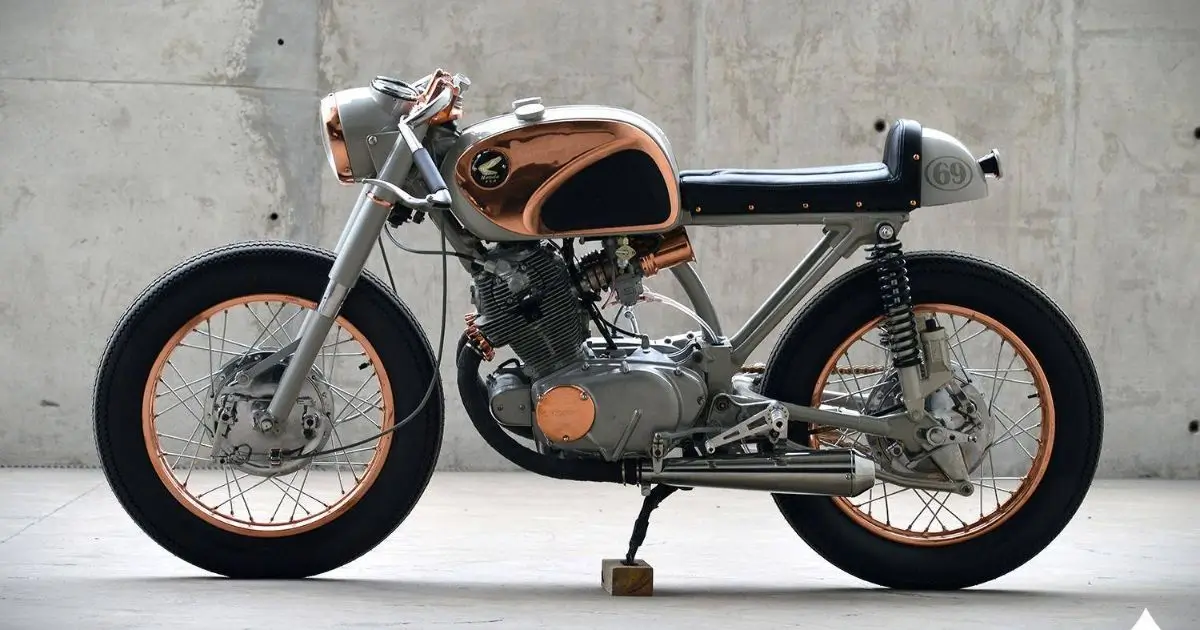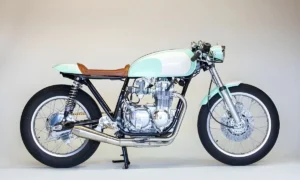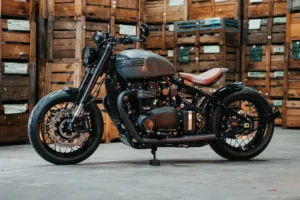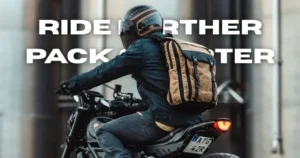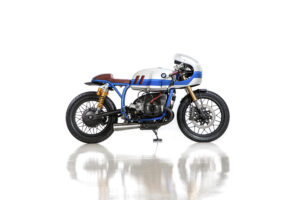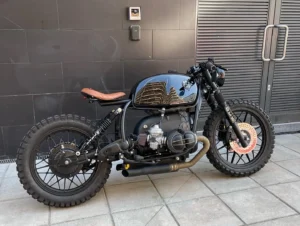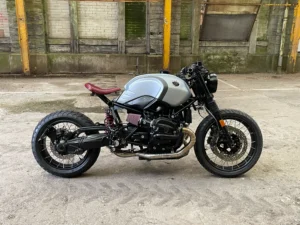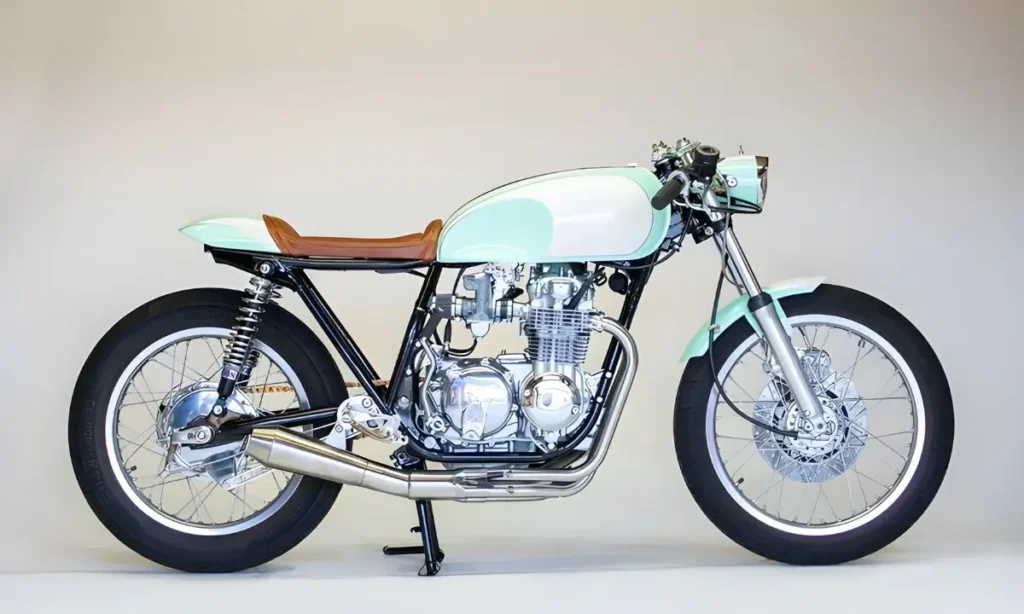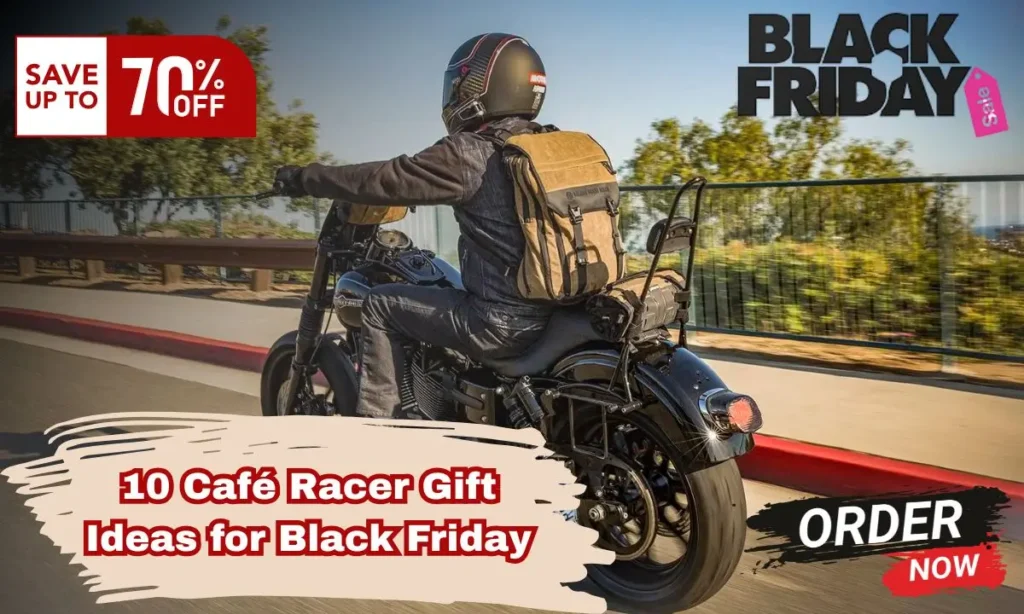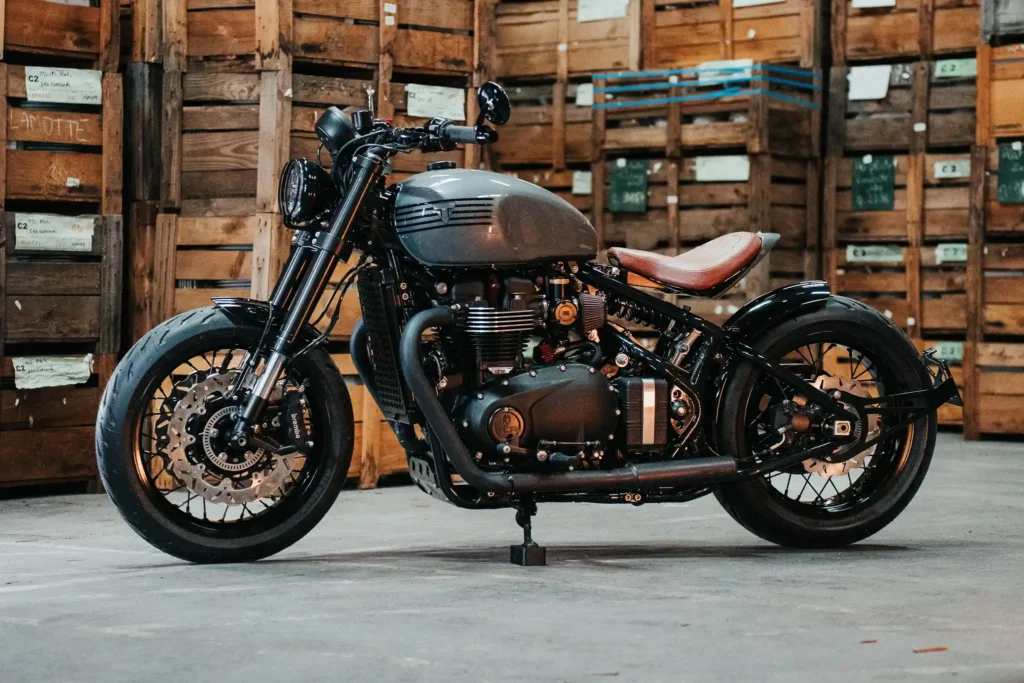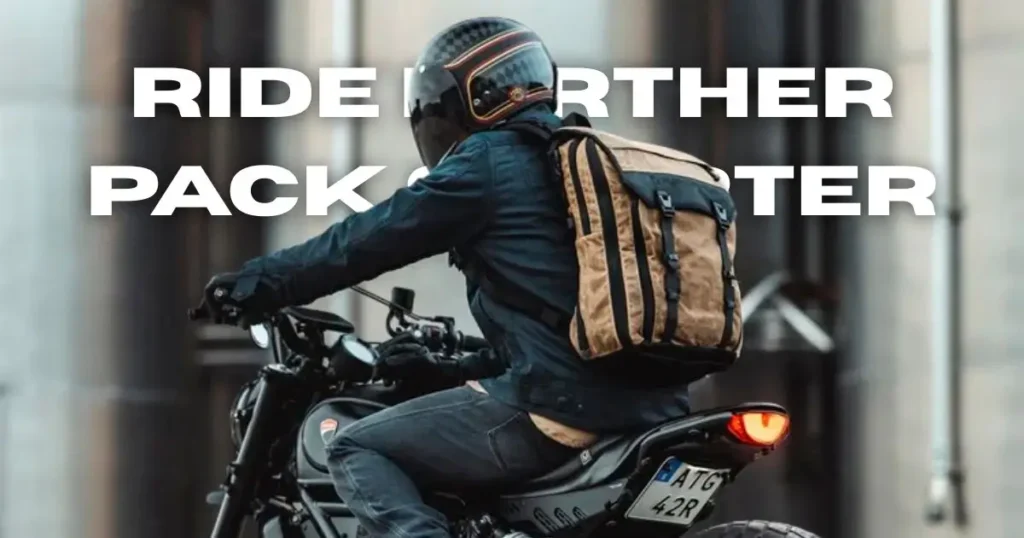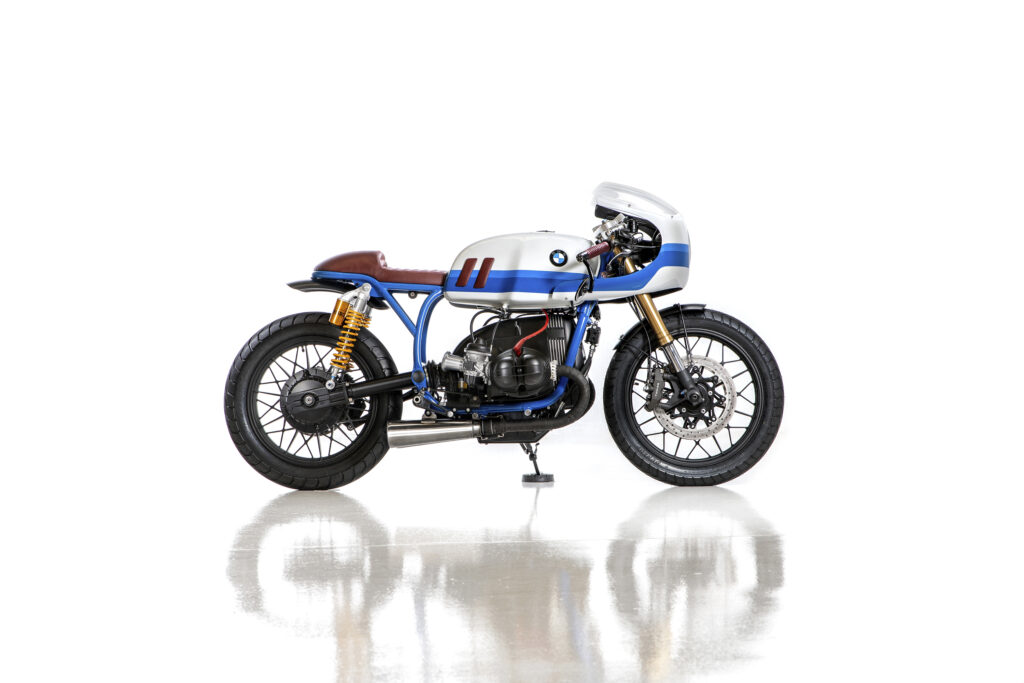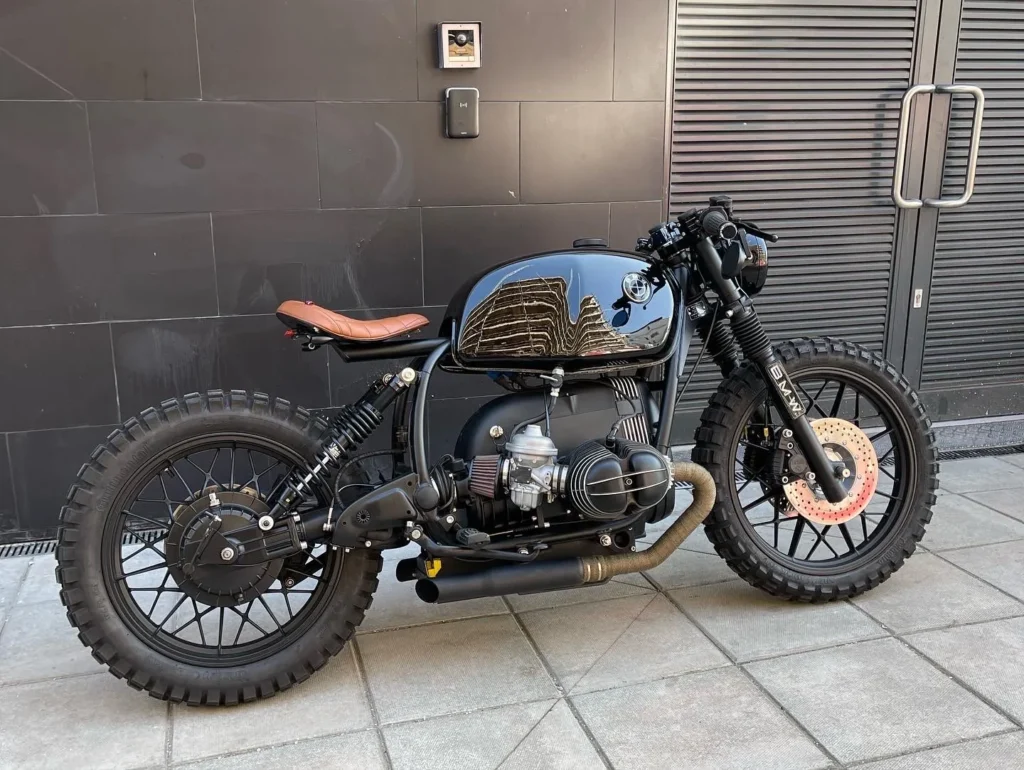Table of Contents
ToggleThe Honda CB77 Super Hawk is one of the most iconic motorcycles from the 1960s. It helped define the sport bike category with its lightweight frame and powerful twin-cylinder engine. Many motorcycle enthusiasts choose this model for custom cafe racer builds. Its classic design, reliable performance, and easy-to-modify structure make it a favorite among builders today.
This article explores the history of the CB77, why it suits the cafe racer style, and how to modify it. You’ll also find real examples, upgrade ideas, and useful resources to support your own Honda CB77 cafe racer project.
What Made the Honda CB77 a Classic Motorcycle
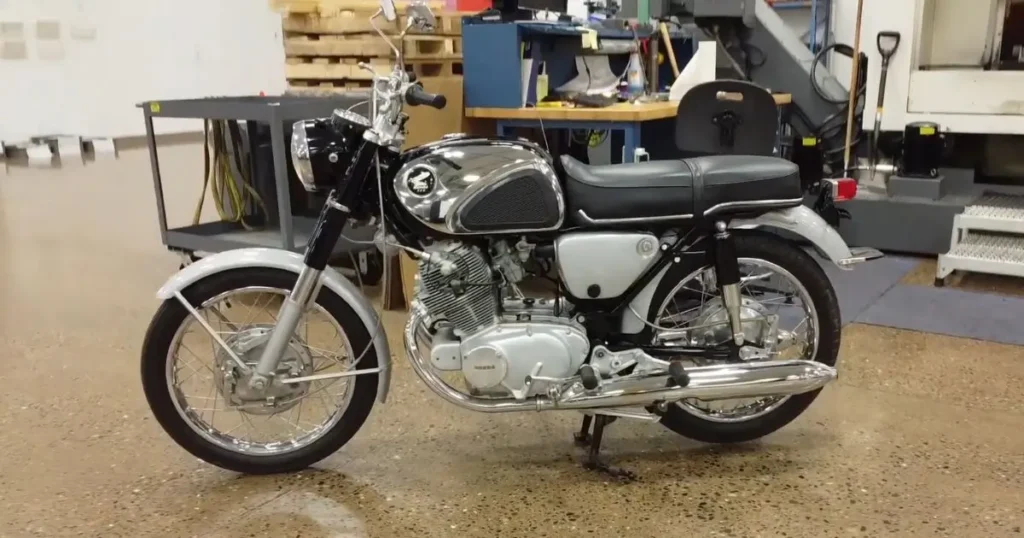
The Honda CB77, also known as the Super Hawk, was introduced in 1961. It marked a turning point for Japanese motorcycles in Western markets. As one of Honda’s earliest sport bike models, the CB77 combined strong performance with reliability, helping to build Honda’s global reputation.
The motorcycle gained attention for its excellent handling and solid construction. Its twin-cylinder engine offered quick acceleration and smooth power delivery. Riders in both the United States and Europe praised its durability, ease of use, and low maintenance needs. The CB77 also performed well in road racing and long-distance touring. Reviews in early motorcycle magazines described it as a major advancement for its time.
Because of its design, performance, and cultural impact, the CB77 remains a favorite among vintage collectors and custom cafe racer builders.
Key Specifications of the Honda CB77 Super Hawk
- Engine Type: 305cc air-cooled, 4-stroke, parallel-twin
- Horsepower: Approx. 28 hp at 9,000 RPM
- Top Speed: Close to 100 mph (160 km/h)
- Crankshaft Layout: 360-degree configuration
- Transmission: 4-speed manual gearbox
- Starter System: Electric starter and kick-start
- Frame Type: Tubular steel frame
- Front Suspension: Telescopic fork
- Rear Suspension: Twin shock absorbers
- Brakes: Drum brakes (front and rear)
- Wheels: 18-inch spoke wheels
- Fuel Capacity: Around 11 liters (approx. 3 gallons)
- Dry Weight: Approx. 170 kg (375 lbs)
- Drive System: Chain final drive
- Ignition: Battery and coil ignition system
Why the CB77 is Ideal for Cafe Racer Conversions
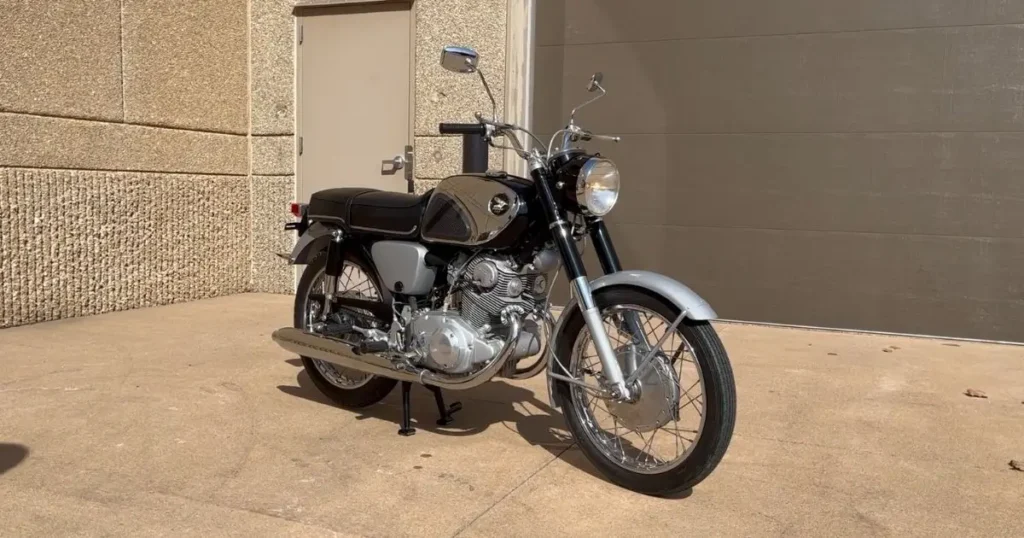
The Honda CB77 has many qualities that make it a good choice for a cafe racer project. Its frame is lightweight and strong. This makes the bike easier to handle and faster to respond in corners. Riders looking for a classic feel with smooth control often prefer this model.
The engine offers a good balance of power and size. It gives enough speed for city and short highway rides. Its twin-cylinder design produces a clean, steady sound that fits the cafe racer style. The engine is also simple to work on, which helps builders with less experience.
Many aftermarket parts are available for the CB77. This includes clip-on handlebars, custom seats, rearsets, and exhausts. These parts allow owners to change the look and feel of the bike without needing custom welding or high-cost services. The original parts are also easier to find than those of many other vintage models.
The CB77 has clean lines and a timeless shape. When converted into a cafe racer, it looks minimal and balanced. This bike gives builders the freedom to mix old design with modern parts while keeping the classic look. Its structure supports different styles, from vintage restorations to modern builds with upgraded systems.
Inspiring Honda CB77 Cafe Racer Builds You Should See
The Honda CB77 has inspired many builders to create unique cafe racers. These projects showcase the bike’s potential for customization.
Mid Life Cycles Build
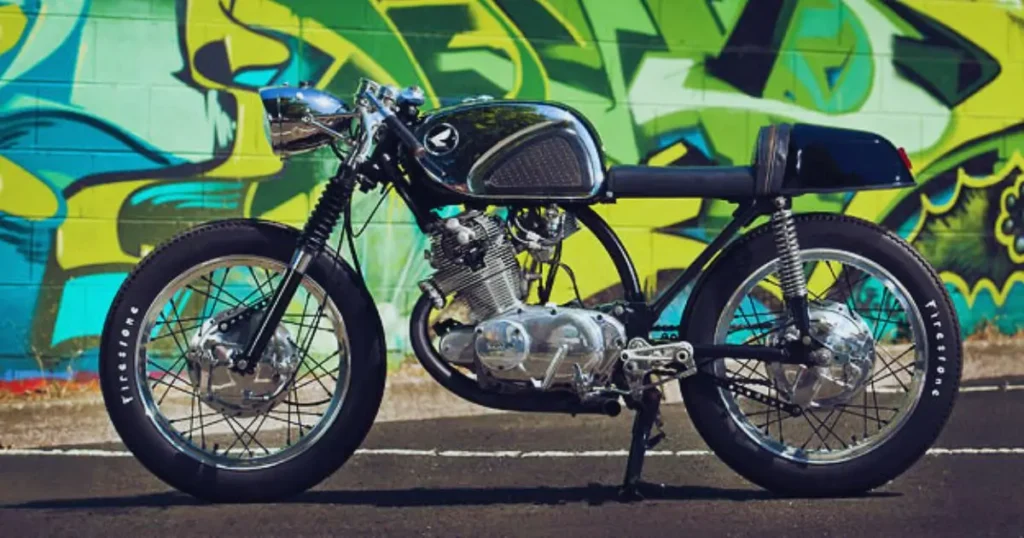
Mid Life Cycles, based in Australia, crafted a CB77 cafe racer that blends 1960s style with modern touches. They retained the original fuel tank and added a fiberglass seat resembling the Ducati 750SS. The bike features Tingate clip-ons, Brooks leather grips, and Tomaselli rearsets. A rare Aprilia headlight from the early 1960s and Borrani alloy wheels complete the vintage look. The exhaust pipes were ceramic-coated in black for durability and style. This build won the Just Bikes Build Off in 2012.
Oni Motorworks Build
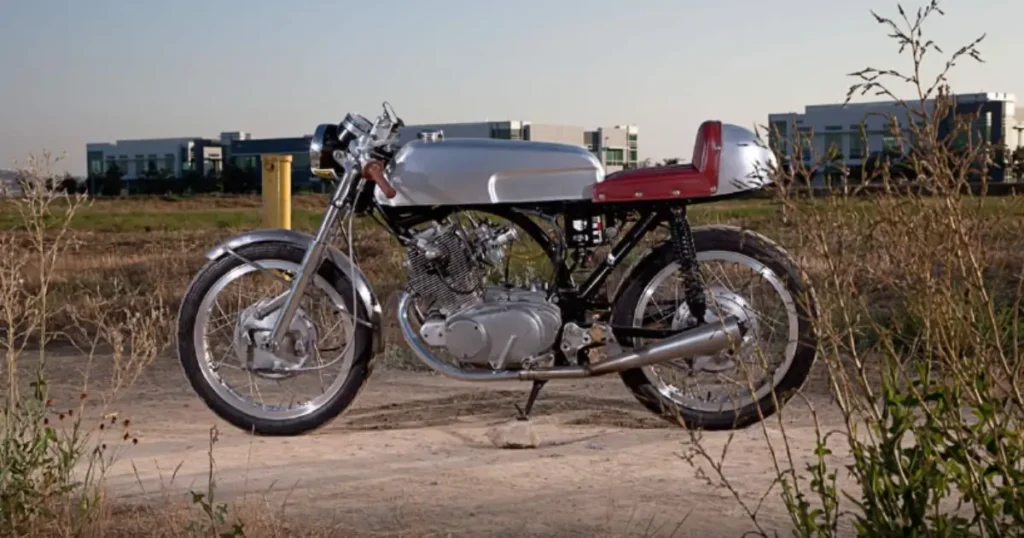
Len Higa of Oni Motorworks in California transformed a 1961 Honda CB77 into a cafe racer with handcrafted aluminum bodywork. He designed the fuel tank and seat from aluminum sheets, giving the bike a sleek appearance. The build includes Magura clip-on handlebars, Avon Roadrunner tires, and a CB160 headlight bucket modified to fit CB77 gauges. The engine was upgraded with high-performance cams and 27mm Keihin carburetors. This motorcycle won the Best Original Award at the Born Free 2 Show.
Pipeburn Feature
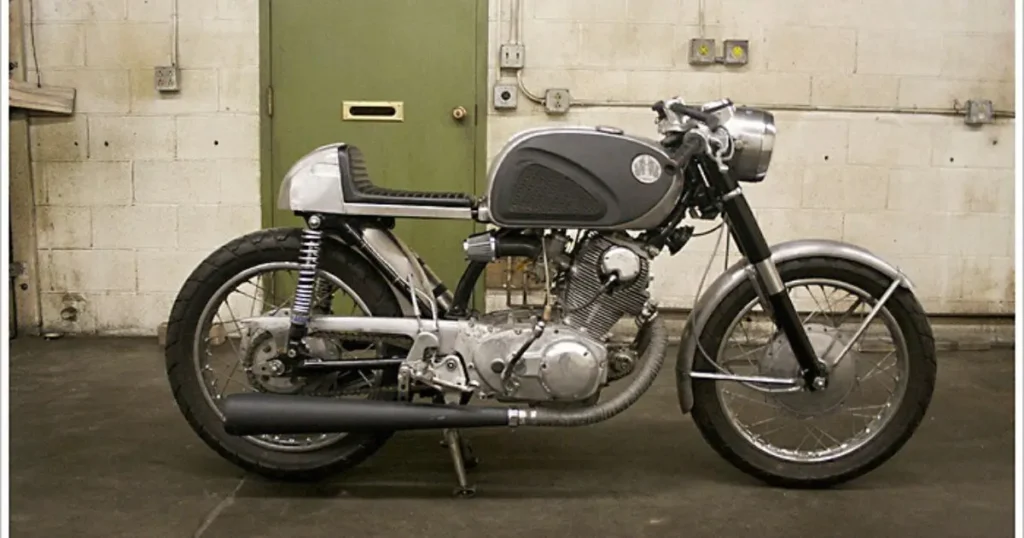
Hill Hudson, an illustrator from Portland, Oregon, built a CB77 cafe racer after discovering the bike had been unused for decades. He rebuilt the engine, adjusting the gear ratios for better acceleration. The frame was stripped of unnecessary parts and repainted. Hudson kept the tank, fenders, and seat in raw steel for an industrial look. He crafted the seat hump from an extra CB77 tank and had it upholstered by New Church Moto. This project highlights the creativity possible with a CB77 base.
What Are the Best Modifications for a Honda CB77 Cafe Racer?
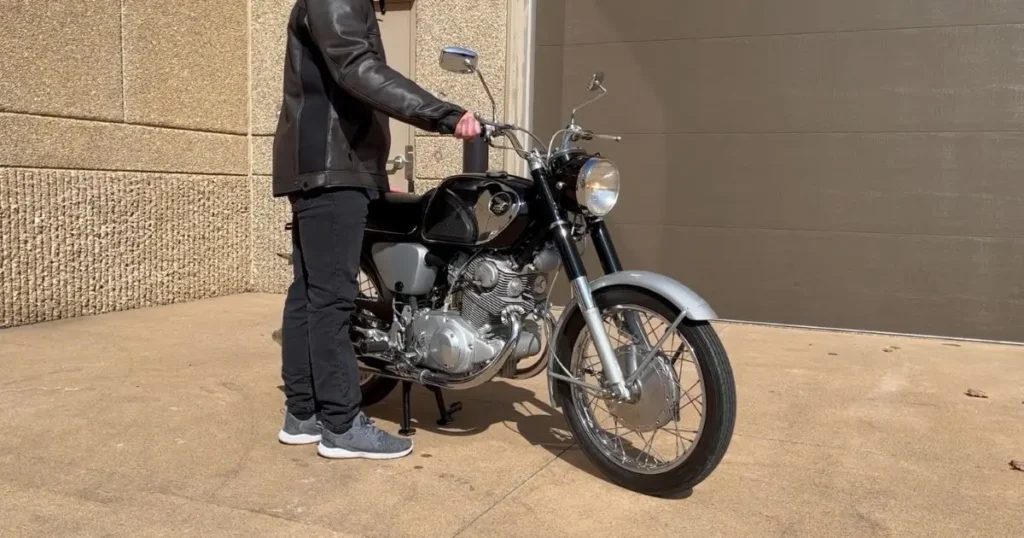
Performance Upgrades
Upgrading the engine improves both speed and ride quality. Many builders install high-compression pistons to increase power. Larger carburetors also help the engine breathe better. A free-flowing exhaust system improves throttle response. These changes allow the Honda CB77 to perform closer to modern bikes. They also make the ride more engaging on short city rides and open roads.
Aesthetic and Functional Enhancements
Clip-on handlebars are a common upgrade. They lower the rider’s position for a sportier feel. Rearsets replace the original foot controls. These parts give better ground clearance and help with cornering. Builders often choose a single-seat unit to follow the cafe racer look. Custom seat pans, either fiberglass or aluminum, reduce weight and improve design.
Lighting also plays a role in both safety and style. Swapping out bulky factory lights for LED headlamps and tail lights gives a cleaner finish. Builders also add bar-end indicators or hidden turn signals to keep the design minimal.
Electrical and Instrumentation
Many Honda CB77s come with old or worn wiring. Replacing the wiring harness increases reliability. Some builds include modern ignition systems. These systems provide faster starts and better fuel use. Lightweight lithium-ion batteries help reduce bulk under the seat.
Digital gauges are also becoming common. Builders install compact speedometers or combo meters with basic functions. These tools help track performance without cluttering the handlebar area. Overall, the goal is to blend modern function with vintage form. Each upgrade adds purpose and improves the riding experience.
Common Problems Builders Face with the CB77 Cafe Racer
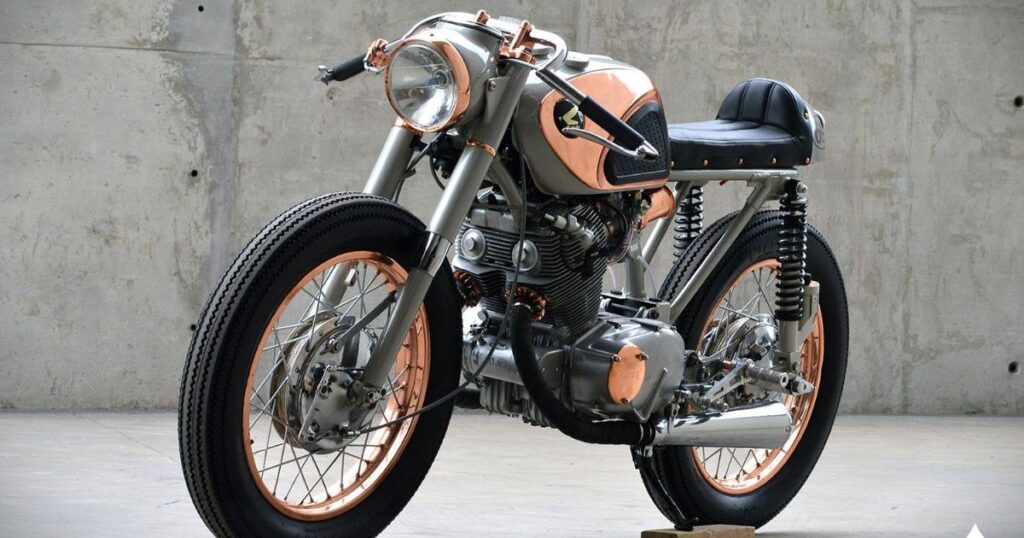
Finding Original or Fit-Compatible Parts
The Honda CB77 was produced in the 1960s. Many of its original parts are now hard to find. Components like side covers, exhaust systems, and switchgear often require long searches. Some builders buy second-hand parts from online marketplaces or swap meets. Others use reproduction parts that match the size and fit of the originals. Even so, not all replacement parts work perfectly, and adjustments are sometimes needed.
Restoring the Engine and Drivetrain
Most CB77 engines are over 50 years old. Wear and age affect performance and reliability. Builders often face problems like worn pistons, leaky gaskets, and noisy gearboxes. Fixing these issues requires patience and basic mechanical knowledge. Some owners rebuild the engines fully using new seals, rings, and bearings. Access to technical manuals helps during this process. In many cases, tuning the carburetors and adjusting the timing also improves performance.
Upgrading the Electrical System
The stock electrical system on the CB77 is outdated. Old wires can crack or short. The charging system may not support modern accessories like LED lighting. Upgrading the system with new wiring, a modern rectifier, and a better battery is a common step. But this can be difficult for beginners. Some builds also require changing the ignition type to improve start-up and stability. Careful planning and clear wiring diagrams are needed to avoid future problems.
Balancing Style and Function
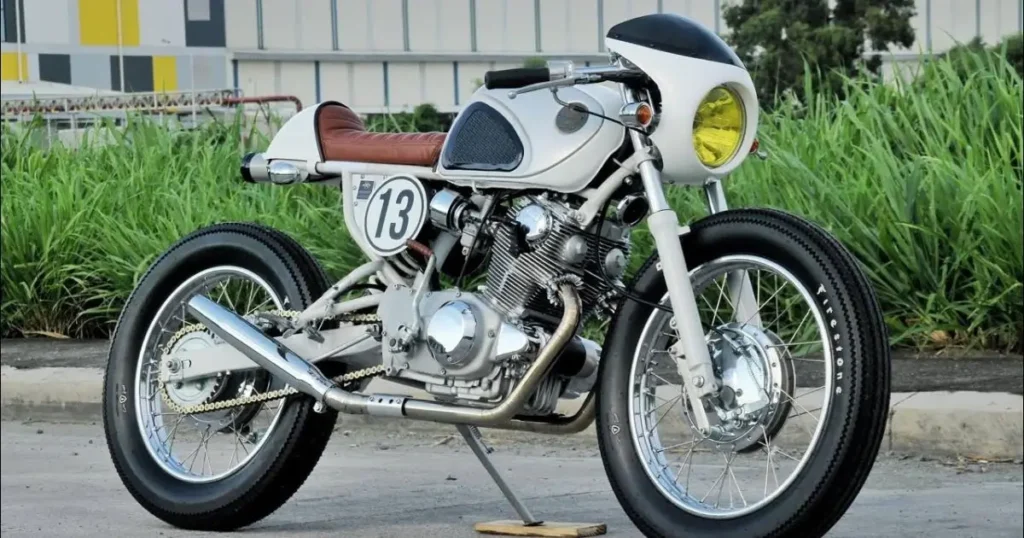
Every builder wants a clean and stylish finish. But removing too many parts can reduce safety and comfort. Some changes make maintenance harder. For example, hiding the battery or electrical units may look better but can limit access. Builders must balance visual design with rider comfort and long-term use. Proper planning helps avoid mistakes. Measuring the space before cutting or welding any part saves time and prevents frame damage.
Budget and Time Management
Building a cafe racer takes both time and money. A clean base bike can cost more at the start but saves money later. In contrast, cheaper bikes may need full restoration. Each part, tool, and modification adds to the cost. Time also adds up. Even a simple build can take several months to complete. Builders must stay organized, plan each stage, and avoid rushing. Careful steps lead to better results and fewer regrets later.
Resources and Communities
Online Forums and Communities
Several online forums support builders working on the Honda CB77. These platforms provide helpful advice, shared experiences, and detailed guides. Honda Twins Forum is a trusted space where members discuss restoration tips, engine repairs, and wiring upgrades. Do The Ton focuses more on custom cafe racer projects. It includes build logs, part reviews, and problem-solving threads. Both forums have active users who give honest, practical support.
Parts Suppliers and Shops
Finding the right parts is key to a smooth build. Many builders turn to trusted vintage suppliers. Common Motor Collective offers parts for older Honda models, including engine kits and electrical upgrades. 4into1.com stocks a wide range of replacement parts and accessories. For rare items, eBay and motorcycle swap meets are useful. Some custom shops also create handcrafted parts like seats, brackets, and tanks tailored for the Honda CB77.
Video Tutorials and Technical Guides
Watching the process helps builders understand each step. YouTube channels like Hugh’s HandBuilt and Classic Octane show detailed builds from start to finish. These videos explain tools, installation steps, and common issues. Technical manuals and original service books are also important. They give clear specifications, torque settings, and wiring diagrams. Builders can often find digital copies online or buy print versions from parts suppliers.
Local Motorcycle Clubs and Events
Offline support is also helpful. Local vintage motorcycle clubs often include CB77 owners. These clubs organize group rides, tech days, and meet-ups. Some events feature bike shows where builders can display their work. Talking in person with other builders allows the sharing of advice, tools, and inspiration. Clubs also help riders stay connected with the broader vintage motorcycle scene.
Conclusion
The Honda CB77 remains a strong base for custom cafe racer projects. Its lightweight frame, reliable engine, and classic design make it easy to modify and enjoyable to ride. Builders around the world continue to restore and customize this model with both care and creativity. With the right parts, tools, and planning, even first-time builders can complete a CB77 cafe racer. Online communities, video tutorials, and trusted suppliers offer helpful support during the process. Whether aiming for a clean vintage style or a modern upgrade, the CB77 gives lasting value. It is a practical choice for riders who respect history and enjoy building.
FAQs
What is the original weight of the Honda CB77?
The stock Honda CB77 weighs around 170 kilograms. After modifications, cafe racer builds often reduce this weight by removing side covers, fenders, and stock exhaust parts.
Can beginners build a CB77 cafe racer without professional tools?
Yes, but some tools are necessary. Basic hand tools, a lift stand, and a torque wrench are required. Access to a workshop helps, but many home garages are enough for a full build.
How much does it cost to build a Honda CB77 cafe racer?
The total cost depends on the condition of the base bike. On average, a build ranges from $2,500 to $6,000. Costs include parts, paint, tools, and optional upgrades.
Are CB77 engine parts still available today?
Some parts are available through specialty suppliers and online marketplaces. Reproduction parts cover most needs, but rare internal parts may require searching or using parts from donor engines.
What fuel type works best for a CB77 cafe racer?
Regular unleaded fuel works well for a stock engine. If high-compression pistons or racing carbs are installed, premium fuel may improve combustion and reduce knock.
How fast can a modified CB77 cafe racer go?
A well-tuned CB77 cafe racer can reach speeds between 90 to 105 mph. Performance depends on engine upgrades, weight reduction, and tuning accuracy.
Does the CB77 need frame modifications for a cafe racer build?
No major frame cutting is required for basic conversions. Most builders use bolt-on seats, clip-ons, and rearsets. Frame mods are optional for custom tail sections or mono-shock conversions.
Is the CB77 comfortable for daily riding after conversion?
Cafe racer setups often reduce comfort. Lower handlebars, firm seats, and rearsets can feel aggressive. Some builders use foam padding or gel inserts to improve ride quality.
How reliable is a CB77 cafe racer for long rides?
With proper restoration and tuning, the CB77 can handle long rides. New wiring, fresh tires, and a well-built engine make it dependable. Regular checks are important for safety.

